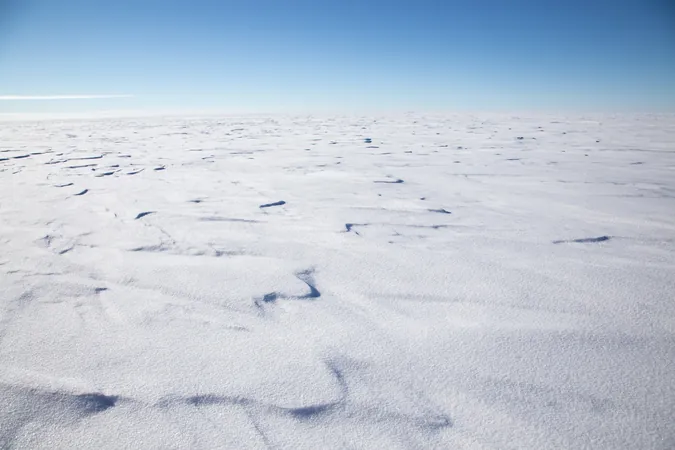
Doomsday Glacier on the Brink: Scientists Warn of Rapid Melting and Catastrophic Sea Level Rise!
2024-09-23
Researchers Warn of Rapid Melting
New research from a collaborative team of British and American scientists spells alarming news for the Thwaites Glacier in Antarctica, often dubbed the "Doomsday Glacier." According to their findings, tidal action beneath this massive glacier will drive an "inexorable" acceleration of its melting throughout this century, raising the urgent question of what that means for global sea levels.
The Critical Role of Thwaites Glacier
Thwaites Glacier, nearly the size of Florida, serves a critical function as a barrier to the West Antarctic Ice Sheet. Its swift retreat threatens not only local ecosystems but also global coastal communities. Currently more than 2 kilometers (1.2 miles) thick in some areas, Thwaites acts like a cork keeping the West Antarctic Ice Sheet contained. Should it collapse completely, scientists estimate that sea levels could rise by 3.3 meters (over 10 feet). Even a partial collapse could result in a 65-centimeter (26 inches) rise – a staggering figure when we consider that sea levels rise approximately 4.6 millimeters annually.
Climate Change and Its Impact
Despite efforts to reduce greenhouse gas emissions as outlined in the 2015 Paris Agreement, the future of Thwaites appears increasingly grim. Researchers from the International Thwaites Glacier Collaboration (ITGC), which includes the British Antarctic Survey and the U.S. National Science Foundation, have worked tirelessly to model these changes. They note that Thwaites has been retreating for the past 80 years – with the last three decades showing marked acceleration in this trend.
New Technologies and Findings
Using advanced technology, including a torpedo-shaped robot, scientists discovered a thin insulating layer of cold water at the glacier's base. However, this insulation is at risk as tidal forces push warmer seawater under the ice, disrupting the insulating barrier and exacerbating its melting rate. This phenomenon mirrors similar events observed in Greenland’s glaciers, hinting at a potentially widespread problem.
Concerns Over Runaway Calving Events
Even more concerning is the potential for "runaway" calving events, where towering ice cliffs measuring over 100 meters could form and subsequently break off, resulting in additional rises in sea levels by tens of centimeters within this century alone. While researchers exercise caution in predicting the likelihood of these events, there remains a pressing unanswered question: Is the loss of Thwaites Glacier irreversible?
Future Projections and Climate Action
Current snowfall in Antarctica, which could initially mitigate some of the ice loss, may not keep pace with the accelerated melting triggered by climate change, warns climate scientist Michelle Maclennan from the University of Colorado at Boulder. As global temperatures rise, increasing ocean evaporation is expected to bring more moisture and snowfall to Antarctica—at least temporarily. However, eventually, this could shift into rain and surface melting, creating a catastrophic scenario where the glacier is under siege from both above and below.
The Urgent Need for Climate Action
The urgency of this research cannot be overstated: the potential implications for coastal cities and ecosystems globally are profound. Scientists continue to monitor developments closely, stressing that the timeline for climate action is critical. Without significant interventions to mitigate climate change, we may be on the brink of one of the most ecological disasters humanity has ever faced. Stay tuned for updates on this critical environmental situation!

 Brasil (PT)
Brasil (PT)
 Canada (EN)
Canada (EN)
 Chile (ES)
Chile (ES)
 España (ES)
España (ES)
 France (FR)
France (FR)
 Hong Kong (EN)
Hong Kong (EN)
 Italia (IT)
Italia (IT)
 日本 (JA)
日本 (JA)
 Magyarország (HU)
Magyarország (HU)
 Norge (NO)
Norge (NO)
 Polska (PL)
Polska (PL)
 Schweiz (DE)
Schweiz (DE)
 Singapore (EN)
Singapore (EN)
 Sverige (SV)
Sverige (SV)
 Suomi (FI)
Suomi (FI)
 Türkiye (TR)
Türkiye (TR)